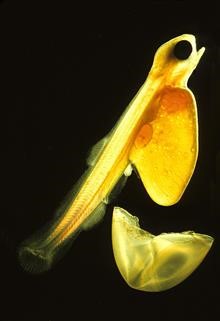The Infertility Org
Infertility Problem in Female
We are the complete source for complete information and resources for Infertility Problem in Female on the Internet.
Risk factors for the formation of antisperm antibodies in men include the breakdown of the blood‑testis barrier, trauma and surgery, orchitis, varicocele, infections, prostatitis, testicular cancer, failure of immunosuppression and unprotected receptive anal or oral sex with men.[23][24] Sexually transmitted infections[edit] Infections with the following sexually transmitted pathogens have a negative effect on fertility: Chlamydia trachomatis and Neisseria gonorrhoeae. They are usually young patients with a history of polycystic ovarian syndrome or oligo-ovulation who responded with elevated E2 levels (3000 pc/mL) and multiple follicles (>15) and patients in whom the ovulation has been triggered by the administration of exogenous hCG. [196, 197] Ovarian hyperstimulation syndrome usually has 2 phases. Estrous cycle abnormalities can cause infertility. If a woman needs an HCG injection to activate ovulation and ultrasound scans show that too many follicles have developed, it is possible to withhold the HCG injection. Gracia CR, Sammel MD, Coutifaris C, Guzick DS, Barnhart KT. Urinary monitoring of the LH surge (eg, with an LH Predictor Kit) can be a substitute for BBT.
Common causes of infertility of females include: ovulation problems (e.g. polycystic ovarian syndrome, PCOS, the leading reason why women present to fertility clinics due to anovulatory infertility.[58]) tubal blockage pelvic inflammatory disease caused by infections like tuberculosis age-related factors uterine problems previous tubal ligation endometriosis advanced maternal age immune infertility Males[edit] The main cause of male infertility is low semen quality. It can either be used to inspect and diagnose certain conditions or to surgically correct an abnormality such as removing scar tissue, endometriosis, or a damaged fallopian tube. It is an approach to disseminate the recommended medical care of infertile couple to the practicing clinicians. These drugs also can also help you get pregnant by causing your ovaries to release multiple eggs.
Even more Details About Infertility Related Journals

Much more Resources For Infertility Related Journals
3,4 Infertility may arise from male factors, female factors, or a combination of these (Table 15–8). Additionally, the sperm may be unable to cross the cervical mucus or may have ultrastructural abnormalities. Ovulation problems can be a result of: polycystic ovary syndrome (PCOS) thyroid problems – both an overactive thyroid gland and an underactive thyroid gland can prevent ovulation premature ovarian failure – where a woman's ovaries stop working before the age of 40 Scarring from surgery Pelvic surgery can damage and scar the fallopian tubes, which link the ovaries to the womb. Many more couples, however, experience involuntary childlessness for at least one year: estimates range from 12% to 28%.[4] Male infertility is responsible for 20–30% of infertility cases, while 20–35% are due to female infertility, and 25–40% are due to combined problems in both parts.[2][5] In 10–20% of cases, no cause is found.[5] The most common cause of female infertility is ovulatory problems, which generally manifest themselves by sparse or absent menstrual periods.[6] Male infertility is most commonly due to deficiencies in the semen, and semen quality is used as a surrogate measure of male fecundity.[7] Women who are fertile experience a natural period of fertility before and during ovulation, and they are naturally infertile for the rest of the menstrual cycle. Infertility caused by DNA defects on the Y chromosome is passed on from father to son. Blood test: The lab will test for levels of testosterone and other hormones.
Extra Resources For Infertility Problem in Female
For conception, sperm must reach the cervix, penetrate the cervical mucus, migrate up the uterus to the fallopian tube, undergo capacitation and the acrosome reaction to digest the zona pellucida of the oocyte, attach to the inner membrane, and release its genetic contents within the egg. Excess cortisol may be produced by adrenal hyperplasia, adenomas, carcinoma, or lung tumors. 8 Patients should be counseled that 50% of couples who have not conceived in the first year of trying will conceive in the second year.
More Info About Infertility Problem in Female
37,38 The addition of 1,500 to 1,700 mg of metformin (Glucophage) daily may increase ovulation and pregnancy rates, but it does not significantly improve live birth rates over clomiphene alone. Up to 2 percent of men are thought to have suboptimal sperm. The impact of fibroids located elsewhere in the uterus are controversial and do not always require surgery. Infertility rates have increased by 4% since the 1980s, mostly from problems with fecundity due to an increase in age.[72] Fertility problems affect one in seven couples in the UK. As treatment begins, couples may experience cycles of optimism and despair with each passing menstrual cycle. Women who have a body weight 10% to 15% below normal may have reduced fertility. Oligospermia is defined as fewer than 20 million sperm/mL, severe oligospermia is less than 5 million/mL, and azoospermia is defined as no sperm present. In order to accomplish this, the semen is washed with a solution safe to sperm and eggs, and then centrifuged to separate motile sperm from immotile sperm and other cells. It is usually not the natural state of a healthy adult, except notably among certain eusocial species (mostly haplodiploid insects). Renal Echinococcus. (PDF, 1 MB) The Journal of Urology, 1972.
Previous Next
See also
Secondary Infertility and Depression
Images of Infertility Treatment
Infertility Specialist in Hyderabad